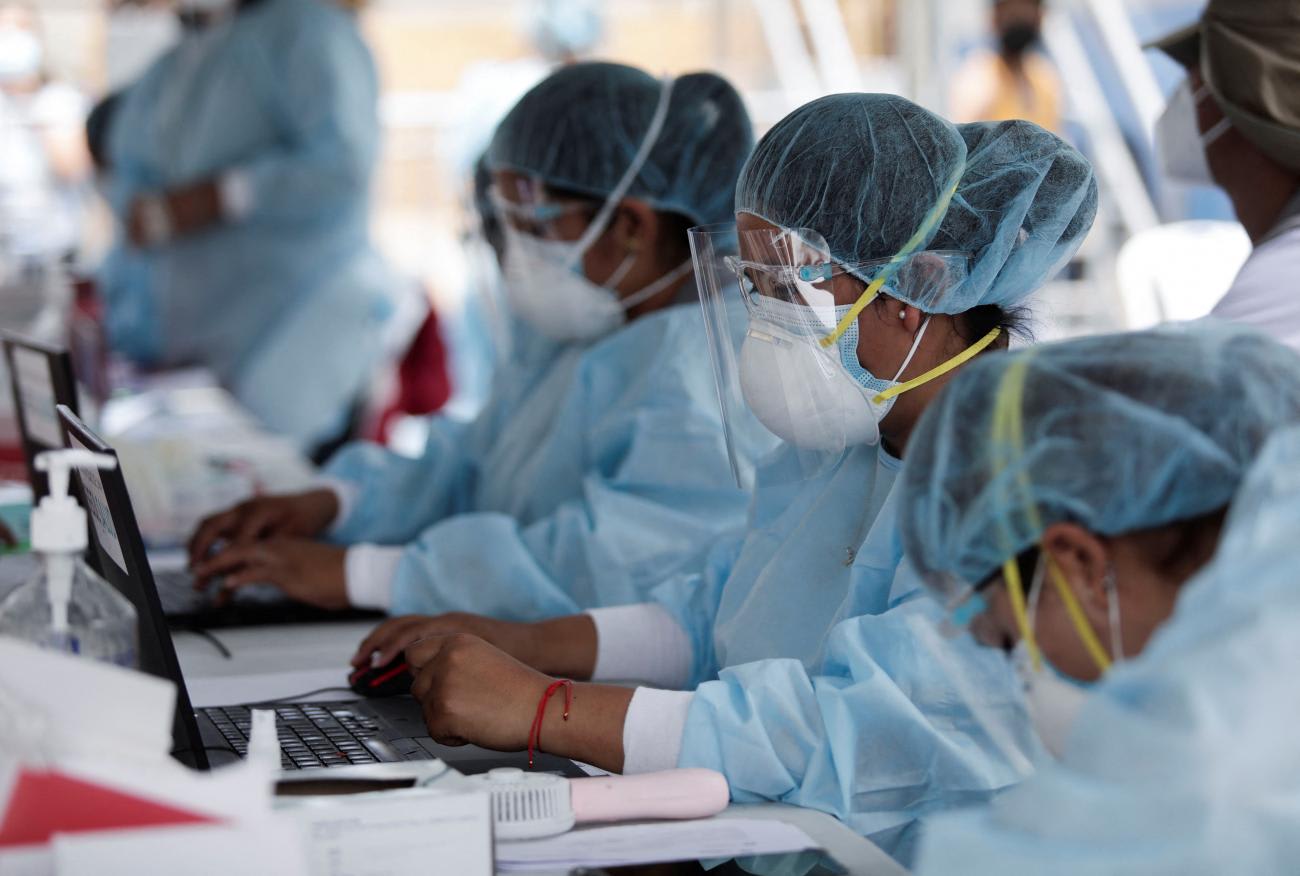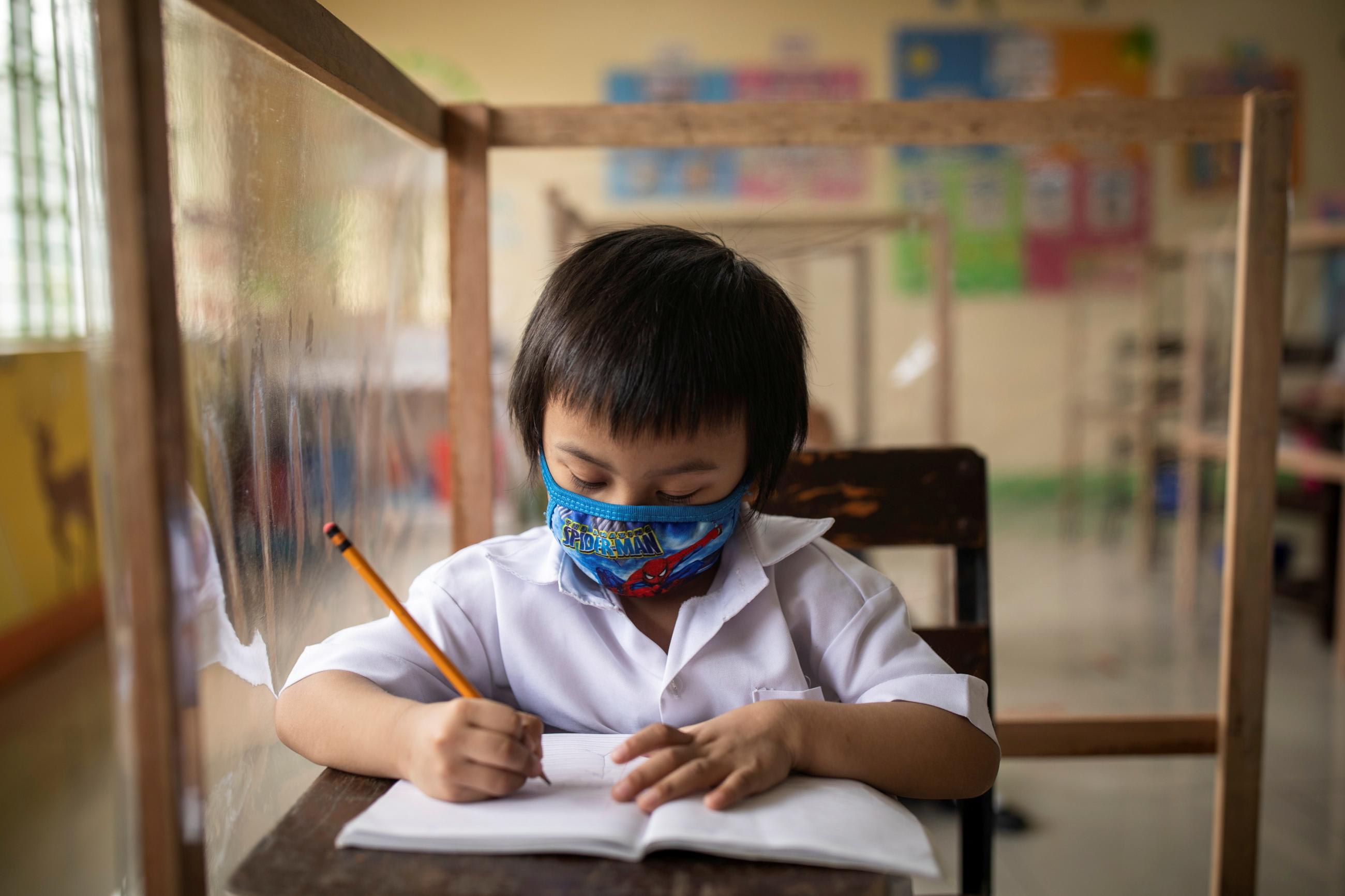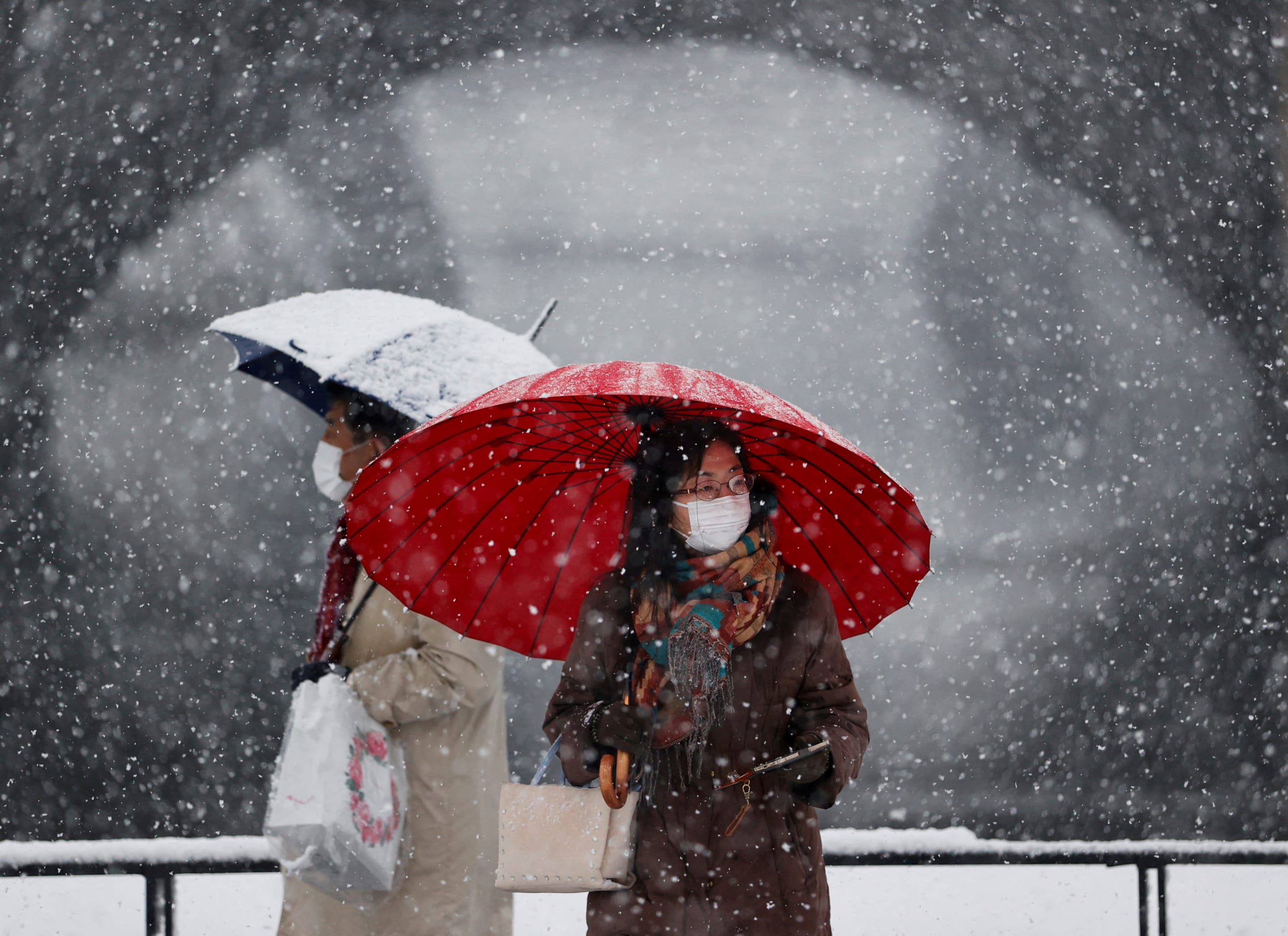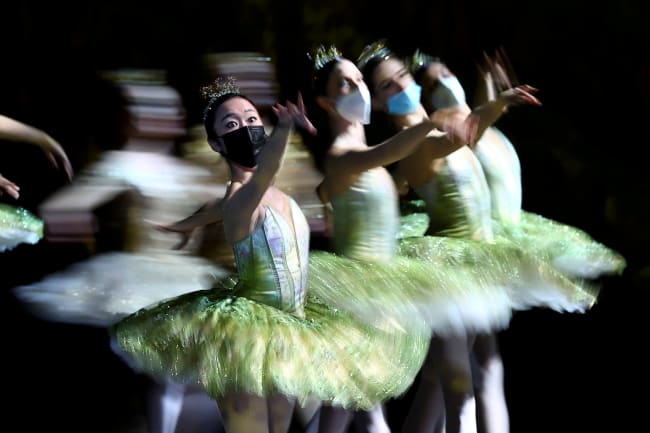Keeping up with COVID-19's twists and turns can be breathtaking. The emergence of the omicron variant in South Africa and Botswana in November 2021 has thrown the world onto another unexpected COVID course.
This week, we turned to our Institute for Health Metrics and Evaluation (IHME) colleague Ali H. Mokdad, chief strategy officer for population health at the University of Washington in Seattle, and professor of health metrics sciences at IHME, to answer our latest omicron questions.
□ □ □ □ □ □ □ □ □ □ □ □ □
Think Global Health: What is January going to look like COVID-wise?
Ali Mokdad: So, with COVID-19 we are having a sharp rise in cases right now due to omicron. We have a lot of diagnosed cases and a lot of infections, but right now, we also know that about 85 to 95 percent of all infections are asymptomatic and not being diagnosed.
COVID will overwhelm the hospitals, but not because it's a severe illness. Right now, the definition of a hospitalization for COVID is anybody who walks into a hospital and is tested and turns out to be COVID positive. For example, I can give you numbers for our hospital [at the University of Washington]. About 75 percent of our COVID-19 admissions didn't come in for COVID. They came in because they had a heart attack or other condition, or they needed surgery, and we tested them and they were COVID positive. So, that's why we are seeing hospitalizations going up. But in reality, the majority of people are coming for another reason and asymptomatic with COVID.
Cases will start to come down in late January. By February and March, we should be in a much better position.

Think Global Health: Are you talking just in the United States?
Ali Mokdad: No, everywhere in the world. Omicron is taking just two weeks to knock everything out. Once you have 1 percent of your cases omicron, it takes two weeks. Omicron is moving much faster in the northern hemisphere right now because of our winter. It came at a time when the delta variant was surging. It also came at a time when we have a lot of travelling, around the holidays, so that helped it to spread much faster.
Think Global Health: How do omicron cases compare with delta variant cases?
Ali Mokdad: What we are noticing with COVID-19 is that for delta reported cases, we had about 6 percent admissions to hospitals. Right now with omicron cases, we have about 1 percent hospitalization.
When omicron came to countries that were having a surge of delta, omicron in a way, was not bad news. There's nothing good about COVID, but omicron is replacing a bad variant, delta. In that regard, it's helping. We'll have more cases of COVID, but less severe cases. And the severity of omicron is less severe than its early ancestor COVID virus—the one that started in Wuhan.
Think Global Health: How does omicron compare to flu?
Ali Mokdad: Omicron is similar to a flu in severity, but flu is not as infectious as omicron. Omicron spreads faster. The exception would be a bad flu season, the 2015 flu season, for example, was much worse than omicron.
COVID cases will start to come down in late January, and by February and March, we should be in a much better position
Think Global Health: Even though omicron is a less severe variant, are there still vulnerable people?
Ali Mokdad: The weakness here is children under the age of five who are not vaccinated. Hospitalizations for kids under five are very high. Older people and those with other risk factors are also at a higher risk.
Think Global Health: So many people around the world are still awaiting vaccines. If someone has access to vaccines, how many doses are best at this point in the pandemic?
Ali Mokdad: We are realizing now that two doses provide basically not much infection protection at all for omicron—it's under 20 percent. With two shots, your chances of getting omicron are 80 percent. But most likely, it will be asymptomatic. It's very effective though as protection against hospitalization and deaths. A booster dose brings infection protection up to 70 percent for severe illness or hospitalization, so it's very important to get the booster. But ideally cutting down the period for the booster dose from six months to three months from your last dose. Greece did that—it was the first country to do it. England, Germany, and France did it. Many countries did, except in the United States. Just this week, the FDA recommended five months instead of six, but why even change it if that's all they're going to do.

Think Global Health: With omicron moving so quickly, what should countries be doing?
Ali Mokdad: So, with COVID, our strategy in the government has been to vaccinate in order to prevent infection. That strategy is gone in my opinion. Forget it. Everybody's going to be infected now with omicron, though few will have severe symptoms. The sheer numbers [the U.S. is averaging about 550,000 new infections per day over the last week]. This is the tip of the iceberg. There are at least 1.5 million infections out there. Countries should focus on limiting disruption to normal life by keeping hospitals running and protecting essential workers.
Many countries that have been very successful at controlling COVID-19 are at a higher risk now from omicron. The countries to keep an eye on are those that had a policy of zero COVID and they shut down. If their vaccination levels are low, the possibility of a mutation exists because there is no immunity and omicron is going to spread very fast and could mutate there.
Think Global Health: Do you think we'll see another concerning variant after omicron?
Ali Mokdad: There's no guarantee we're going to have another variant, but there is no guarantee that we won't. Virologists who are keeping an eye on this say there is a lot of room for this virus to mutate. And there is a big concern that we could have another wave.
With omicron, many cases are asymptomatic, so you're going to find a large percentage of people walking around who are COVID-19 positive
Think Global Health: Should countries also be ramping up testing?
Ali Mokdad: Right now, in my opinion, testing asymptomatic people should not be allowed anymore. With omicron, many cases are asymptomatic, so you're going to find a large percentage of people walking around who are COVID-19 positive for omicron but have no symptoms.
If you're going to change something in your behavior, then go get tested. For example, if you're traveling, get tested. If you're going back to your work, get tested so you don't go back and infect others. But for somebody like me staying at home, if I start feeling symptoms, why even test if my symptoms are not a problem? Save the tests for people who need them.
Think Global Health: What about school testing? How often should schools test in this omicron era?
Ali Mokdad: We want teachers and students to be negative and we want to make sure we have tests—the PCR tests—for them. Like we did at UW, schools need to do random sample testing on a regular basis to monitor the percent positive cases. The frequency of testing has to be driven by percent positive in your random sample that you're doing on a regular basis and by infection symptoms. Also, if symptoms appear, you have to test and then once a positive test is found in a classroom, you have to do testing for that whole classroom before they all come back.
Think Global Health: Speaking of the speed of spread. How fast does omicron spread?
Ali Mokdad: Omicron spreads so fast. If you come near me and I am infected, and if I'm wearing a mask but it's not a good mask, if it has gaps in the side, 10 seconds is all that it takes. With the original COVID-19, with someone wearing a mask, it would have taken being close to someone who was infected for two or three minutes. Two to three minutes for omicron is ages.

Think Global Health: Will viral load be worse if you're around someone with omicron for a while?
Ali Mokdad: Yes, omicron has 70 times more production once inside you—for the unvaccinated. But among the vaccinated and boosted, it's in there for a shorter period and then it is gone. Among people who are immunocompromised, like somebody who has HIV and is not taking their medications, it could stick around and they could be shedding the virus for a long time. There are publications showing that people who are immunocompromised, especially those with HIV and are not on medication for it, that the virus has replicated in them and mutated many times.
Think Global Health: If halting the spread of omicron is near to impossible, what next?
Ali Mokdad: The policy for COVID right now is not to prevent infection, it is to reduce disruptions in normal life. How can we keep society running and where do we put our priorities? The most important priority would be to wear a mask—a good quality KN95 or N95 mask and then wearing it correctly.
Think Global Health: Are N95 masks pretty easy for the average person to get these days?
Ali Mokdad: No, and it's expensive. In my opinion, when the president said he was buying Americans 500 million tests, I would have ordered 500 million masks.
Think Global Health: So what do you recommend if you can't get your hands on an N95 mask?
Ali Mokdad: Wear a surgical mask and wear another one on top of it—double mask.
If you are a company, a supermarket or a restaurant, if you want your business to be running for a long time with your employees coming to work and you want to build confidence in your customers, give your employees N95 masks. Then advertise it. Put a sign in the front of the store that says, "We love our customers. All of our staff are required to wear N95 masks."
I hope when we go back to normal, governments won't just focus on the economy, but there will be a focus on our health, mental health, and education
Think Global Health: Do you have any other COVID-related concerns right now?
Ali Mokdad: Long COVID is a problem, quality masks are very important, protecting our essential workers is very important. Telling workers to go back to work only five days after having COVID without testing negative is wrong.
But I am also very much concerned about the mental health impact and the educational impact in the U.S. and globally. I come from the Middle East and in the Middle East, a girl who hasn't gone to school for two years because of COVID delays, I am so concerned that she will never go back to school. So, I am very much concerned about the impact of omicron on education and the quality of education. And I'm very concerned about the anxiety that has come with the lockdowns, the closure of businesses. That will impact all of us eventually. There will be a long-term effect once COVID is gone, once it's endemic.
I hope that when we go back to normal, governments won't just focus on the economy, but there will be a focus on our health and mental health and education. How we can help students to catch up on what they missed. How can we help people who have had a hard time and lost loved ones. I lost two cousins within three days in Lebanon—brothers. It's difficult and it's going to be very difficult for a lot of people. We need to be able to help people and do it right.
When you say you're preparing for an emergency, part of preparedness is your recovery—response and recovery. If you don't spend a lot of time on recovery, then you fail. And you're setting yourself up for a longer-term effect.
EDITOR'S NOTE: All statements and views expressed in this article are solely those of the individual authors and are not necessarily shared by their institution.












